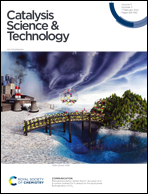Cooperative photoredox and palladium catalysis: recent advances in various functionalization reactions
Abstract
The recent resurgence of synergistic palladium and visible-light-induced photoredox catalysis has led to a paradigm shift in Pd-catalyzed organic synthesis that encompasses unconventional modes of bond formation via cross-coupling, C–H bond activation, C–X bond functionalization in organic molecules, and access to various elusive reaction pathways under mild conditions. Moreover, the ability to reroute the traditional Pd-catalyzed reactions via alternative Pd/radical-mediated pathways can lead to improvements in the reaction rate, conditions, functional group compatibility, and/or substrate scopes. The combination of a suitable (metalla- or organo-)photocatalyst with conventional active Pd0 or PdII catalyst has been employed as an efficient dual catalytic system for various C–C and C–O cross-coupling reactions. In the course of the reaction, the organopalladium complex captures the incipient radical species in a rebound process, resulting in a transitory PdIII or PdIV intermediate to furnish cross-coupled products mostly via the reductive elimination pathway. This Minireview discusses all advances in the design and development of these cooperative catalytic reactions over the past few years, demonstrates their unique mechanistic features, and highlights selective examples for substrate scopes.



 Please wait while we load your content...
Please wait while we load your content...